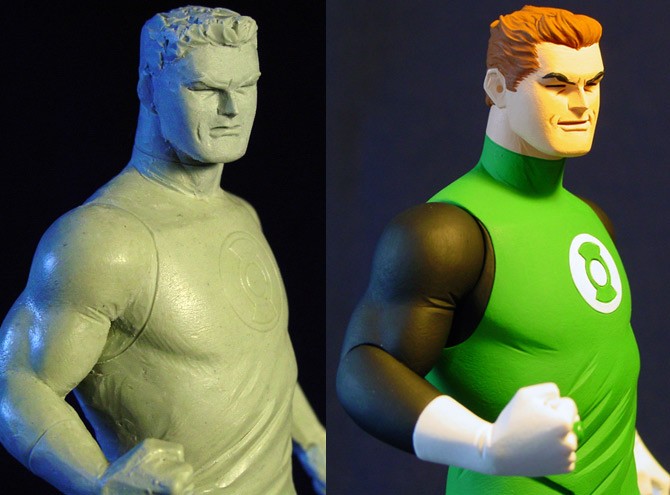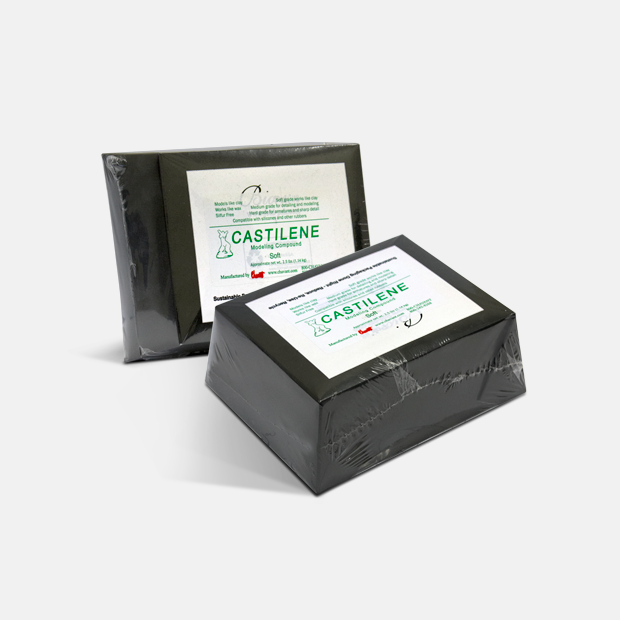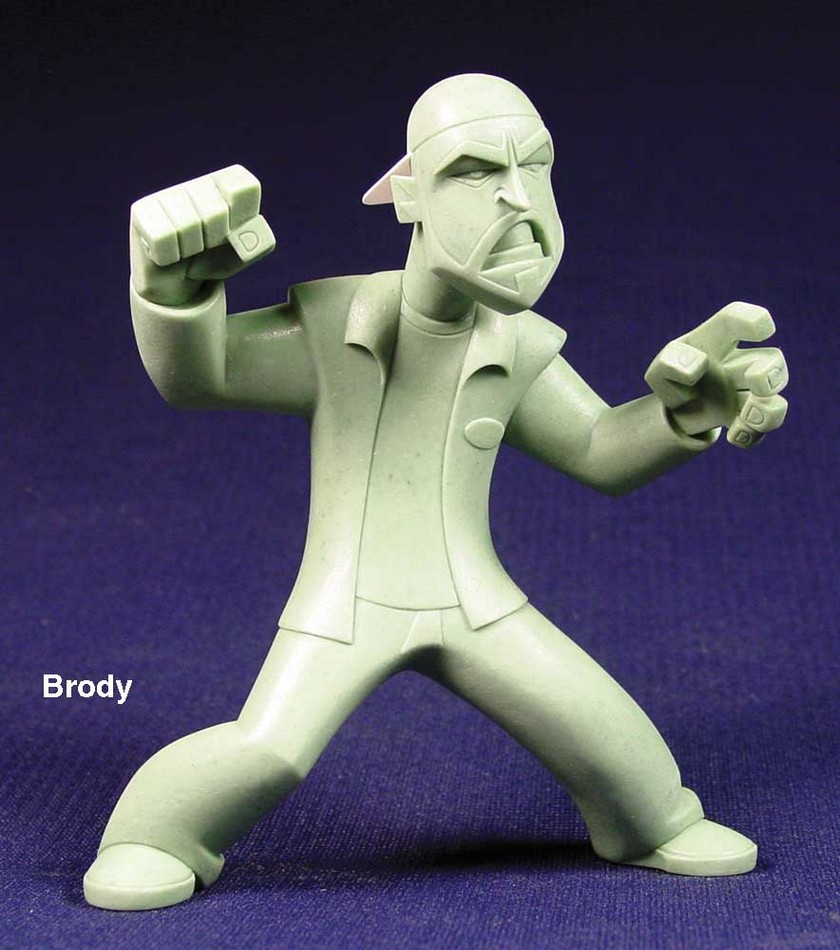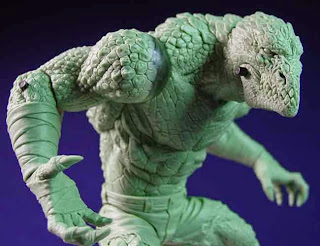Sculpting Material Review: Castilene
Hello :-)
This is Daniele :-)
Something new here, some new things, some new stuff.
Not actually new for all, but truly new for me LOL :-)
Why this article?
 |
| my Castilene |
just because, for who know me, my mantra is:
DO NEW THINGS! ALWAYS
Curiosity is the best enemy of the happiness
This is why I always try to do something different in my sculpting process... where's the fun instead????
Just speaking with Chris about sculpting, he introduced me for the first time a different approach for sculpting: Castilene.
Actually, our first speech was about Wax Sculpting, but generally speaking Castilene is a great thing to do the transition from Clay to Wax.
What's Castilene
 |
| Jonathan Matthew sculpts vastly in Castilene his figures |
|
|
Castilene is a wax-based sculpting material by Chavant developed as sort of a bridge between two of the most commonly-used sculpture mediums (especially in toys and Action Figures): traditional sculpture wax and plasticine.
Actually, as we'll see, Castilene is very different from pure wax, but it maintains some very interesting features.
The great thing about Castilene is that it's easily shaped and formed, like plastiline, but it's also lightweight enough that it can support itself without the use of an armature!
YES: WITHOUT ARMATURE!!!!

What's bad?? Exactly like Wax, in my opinion, Castilene has a high learning curve and most sculptors (me too obviously) learn to sculpt in other materials before moving on to Castilene.
When I started to use it, I felt like I have never sculpted in my life.
Indeed, Castilene-like-Wax isn't indicated for beginners.
Sometimes when you work with Castilene, you have the feeling to grab all your sculpting tools and throw them through the nearest window :-) :-) LOL.
But persistence and consistency will help you (as always my friend)
It comes in two colors and three levels of hardness.
I decided on the hard version (greenish one), because more hardness means more simple to create details, especially for miniatures.
Tools and Equipment
The first thing you will need in order to start creating a sculpture in Castilene is the proper tools and equipment.
Castilene, like most waxes, is easiest to shape when you heat it, so you will need heat sources to soften the material for creating the basic shapes and tools that can be heated in order to do the actual
 |
| I use an alcohol torch continuously with my metal tools |
So The majority of the tools that you will want to use will be metal.
The medium and hard grades of Castilene are most easily manipulated when they are heated
Castilene will become somewhat pliable from the warmth of your hands, if you hold it long enough, but this is not a very effective method of heating the material.
 |
| Metal tools for wax carving are perfect for Castilene |
Create the Shape with Castilene
 |
| I move my metal tools over the flame continously. Castilene is all about temperature. |
When creating any sort of a complex sculpture, you will want to start with the hard grade Castilene in order to create a base or armature to work .
When warm is exacly like a clay.
 |
| at natural state, Castilene is very hard. |
The hotter the Castilene is, the softer it gets.
Hot Castilene also sticks to itself a lot better than cold Castilene
If you need to add material or pieces to the sculpture, it's best to heat the Castilene you are adding to a near-liquid state and press it on firmly.
Also you can simply use a hot lamp, but actually I haven't, because hard version is really HARD!
 |
Put into a wax warmer, bought in a local store for 8 euro
|
 |
just taken from the wax warmer, it is like a hard toothpaste as consistency, but warm
|
 |
| Castilene cools very quickly, it becomes more harder |
 |
| Carving is easily when is cold |
 |
| After 2 minutes is so harder that I can lift my metal plier |
Playing with Castilene
As Always I created two different parts for the torso and the pelvis, then I linked and sketched the pose
 |
| I sculpted torso and pelvis separately while Castilene is warm |
 |
| sketching the head |
 |
| Set up the pose and face |
Finishing and Polishing
This is the HARD thing about Castilene.
Smooth finish is so difficult (exactly like wax)
So frustrating, especially for who comes from Sculpey or FIMO.
Castilene can be sanded with sandpaper for a smooth finish, but isn't simple as polymer clay
I have the habit to working with Polymer Clay, though.
In Sculpey or FIMO, I use mainly turpentine or isopropyl alcohol to smooth surface, that is pretty simple to achieve (I vastly do this at the end of session, just to let liquid evaporate)
About Castilene instead for areas that require special shaping and sanding,you can use sanding pads designed to work with wet sanding (3M brand works perfectly as Chris Vierra suggested me)
Sanding pads are more durable and flexible than sandpaper, but you will find that they don't work in every situation, so it's best to keep both handy.
IMPORTANT: you have to wash your hands often because Castilene tends to be sticky and dirty, especially if you manage your sculpture with your hands.
Another con is that the more you manage your sculpture with your hands, the more it gets warm, then soft, so be careful.
To sanding, for areas that are delicate or have a lot of detail, I froze the sculpture first.
It will take more work to sand a frozen sculpture smooth, but it can sometimes help to get a more refined finish.
Pros and Cons
Castilene is undoubtedly a great material, but here my personal opinions about the pros and cons.
Anyway, like I said in my article
"The Ultimate Guide to Become a Miniature Sculptor", Whatever works for you is whatever works for you.
No tricks. Every sculptor work in his path.
Often, the material we’re first introduced to is the one we end up staying with.
But just as often, as we work, the longer we work, the more we understand what we want from a material based on what we want to accomplish.
Most PRO:
- It's lightweight material 40% than plastiline and other clays.
- You can play with your clay, without any thought about posing and armature
- You can easily cut and attach your sculpture in every moment
- You can change you pose in every moment (nearly actually)
Most CONS:
- Castilene, like wax or plastiline, isn't a definitive material so you need yo create the mold and cast your creations, in order to create the definitive piece.
- Castilene It's hard to understand, especially for beginners and its hard-curve sometimes is frustrating
- Personally I think that Castilene is not suited for tiny miniatures (32mm or 45mm)
- Really POOR documentation about: Wax/Castilene sculpting is absolutely an old art, and most documentation is so hard to find.
Link and resources:
_____________________________________________________________________________
We could watch the newest TV series on Netflix, instead we're here to write articles for you!!
Support NOW Massive Voodoo!
If you like to support or say thanks the monkeys of Massive Voodoo in what they do, please feel invited to drop a jungle donation in their direction via paypal or check their miniatures they got on sale here.







































































